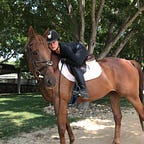Repeat Repeat Repeat Repeat Repeat Repeat Repeat Repeat Repeat Repeat
In this exercise, I partnered with three other people to make a still life. However, it was not as simple as I thought it would be. Our instructions were to stage and photograph a still life scene using objects like shapes, typography, and structures. Our goal was to create a 3-dimensional space that functions as a “stage.” During this process, we had to experiment with lightning and color about our composition. After the in-class photo session, an additional layer of form or typography must be added to the photography via Photoshop or other programs.
At the beginning of this project, one of the requirements was to utilize the machines at EPIC, which houses the laser cutter and 3D modeling tools. My group and I used a combination of acrylic glass and wood scraps found around the center. For the forms, we used shapes from our “Shapes Poster” from last semester. The image above shows the variety of shapes and materials that we used for our objects. During the process, we encountered some difficulties regarding using new technology. These difficulties included sizing of the objects with how much material we have left and preventing fires from happening with the wood.
Other materials that we used in this project were a projector and a lightbox. We also created a text file with the words “repeat” written in different languages. This concept of repetition correlates with how the shapes interact with the lightbox and text background. Moreover, we also played with the colors and expanded the idea of repetition to not only form and text but even color.
During our photoshoot session, we projected the backdrop image and began working on our still life. We placed the shapes in different areas. For example, we put the forms either on top of the box to create a shadow with the projector in front of the backdrop file. The shapes were also placed inside of the box to see if the lights reflect off of the glass. Instead of focusing on the box from one side, my groupmates and I also played around with the angle of the projector and photograph the still life from different angles.
After the photo session, we parted ways and began choosing different pictures to create our posters using typography layers. This process was more difficult for me than I expected because I had to deal with the scattering lights, and it was hard to create a cohesive poster.
In Adobe Photoshop, I experiment with creating distortion and glitches. However, it did not work as well as other posters and compositions that I have done in the past because the photograph was already very busy. I began to play around with knocking different areas out, which made the process a little easier to manage. I also played with contrast and inversion to show some differentiation in color. With the typography aspect, I copied and pasted the word repeat throughout the photo.
The feedback that I received from the final poster was helpful. Some of the advice given by my peers includes working on a hierarchy of scale and finding a starting point as the content of my poster is almost the same size and color. Therefore, I do not consider this as my final and I will use the feedback to help guide me to the next step in improving my poster.
